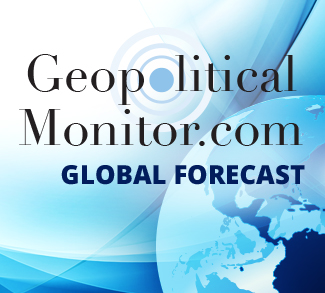Australia’s next defense white paper will need to align overall strategy with capabilities and funding, something that is extremely difficult to achieve. Canberra will have to face the reality that what has worked before might not necessarily apply as the Asia Pacific region goes through a transition phase, producing an atmosphere of uncertainty. The white paper will definitely have some echoes of the past, but it will also be a break from the most recent examples.
What must be addressed?
The white paper will need to make some forecasts, especially since the changing regional strategic dynamics in the Asia Pacific region will not look the same as they have over the past few decades. Policy planners will need to contend with the reality that Australia finds itself in a period of transition that this generation has not seen before. Between the end of the Vietnam War and Australia’s intervention in East Timor in 1999, Canberra was quite reclusive contributing mainly towards UNPKOs that did not have the same sort of magnitude as the Iraq and Afghanistan wars. The service medals worn by uniformed members who have served overseas post 1999 is a clear indication of Australia’s activity compared to the 1980s and 1990s.
The white paper’s authors will also need to address the core issue that has always hounded Australia: the divide between whether Australian strategic interests are served by operating a force that can independently defend against a foreign aggressor, or by conducting expeditionary operations overseas to secure goodwill. Australians like to draw on historical analogies to frame arguments, something which will be risky because Canberra has not found itself in a position like this previously.
More specifically, the white paper will have to contend with China’s recent economic restructuring and what it means for the PLA, as well as Beijing’s decision to cut PLA numbers and emphasize a more technologically-orientated force. Also, Beijing’s provocative actions throughout 2013 will juxtapose the 2013 white paper, which had a benign attitude towards China. There is also the long-term impact of Japan’s economic and demographic decline.
By the time the white paper is published, Indonesia will have a new president. The likely candidate, Joko Widodo, will want to maintain Indonesia’s influence in ASEAN. Canberra might struggle to make Widodo look south towards Australia rather than towards Jakarta’s regional engagement with ASEAN. Canberra is increasingly aware that Indonesia is more important to Australia than Australia is to Indonesia. It might be in the Abbott government’s interest to ensure we are equally important to Indonesia.
What will the government try to achieve?
Prior to being elected, the Abbott administration promised a new defense white paper by early 2015. It also promised an increase in spending to 2% of GDP by 2023 (approximately AUS$50 billion), this comes after the former Gillard and Rudd Governments cut defense funding. This 2% figure will be extremely difficult to achieve, due to the overflow effect of cuts to the Defense Public Service, services for uniformed members, and emerging gaps in manufacturing. So what does this 2% mean for the Australian military?
Within the context of rising military expenditures by Australia’s neighbors, 2% GDP will not stack up well over the long term. Australia’s defense planners will need to look at its current strategic objectives laid out in the 2013 White Paper, this includes the ability to independently maintain the defense of Australia; maintain the security and stability of Australia’s immediate region; followed by the Indo-Pacific, and finally the international order.
Looking back at Australia’s previous defense white papers, each of them have taken a geographical perspective of Australia’s responsibilities. Australia is deficient in its ability to independently operate far from its shores for extended periods of time. The acquisition of two new LHDs is designed to make Australia more capable and able to respond to regional emergencies, possibly without the need for US strategic and tactical lift. However, defense planners will ask themselves, ‘where are we going to use them, and for what purpose?’ These are just some of the questions that are also being asked about the Navy’s new air-warfare destroyers and planned submarines.
Australia as a middle power
These strategic objectives, capabilities, and funding are aimed at maintaining Australia as a middle power in terms of military capacity. Taken within the context of Australia’s immediate region – comprised mostly of small Pacific islands – Australia likes to consider itself a great power, but within the wider Asia Pacific region, Australia will struggle to maintain middle power status in the near future.
A middle power plays a role in their respective region, but not the lead role. They are incapable of looking after their own interests by their own means and unable to defend themselves unilaterally. They are also usually reliant on a great power to further their own national interests. Due to Australia’s large landmass relative to its small population, Australians have always doubted that they can defend their continent independently. Maintaining strong alliances with a great power has always been a key factor for Australia defense planners.
With the growth of Asian markets, Canberra will struggle to be influential. If it wants to be effective, then it needs to translate its economic credentials into effective outcomes. However, Australia is struggling to compete against the growth of Asian labor markets, making Canberra less attractive to foreign buyers. The way to measure whether a country is influential is about ends and not means. The writers of the new white paper will have to contend with this possibility and make necessary changes and developments to prevent otherwise.
Conclusion
Geopolitical strategy has never been any easier for Canberra. Previous defense white papers have promised a lot, but have rarely delivered. If there is a dramatic shift in the regional balance of power or another incident on the magnitude of 9/11, then Canberra will have to go back to the drawing board.
This will also be the third white paper in seven years, therefore there will be some elements of consistency. However, the Abbott government will want to break away from its predecessors’ white papers and avoid cutbacks, despite overflow effects from previous cutbacks. This is in spite of embarking on austerity measures in other areas of government. Nevertheless, the first rule of defense planning is to outline your strategy and objectives. Poor defense planning is asking: ‘what can we buy with the funds allocated to us?’ Military strategy is about achieving ends, not about the means and which weapon platform looks attractive.




